I have designed two circuits that act as Cell Phone Detector Circuit, one using a combination of Schottky Diode and a Voltage Comparator and the other using a BiCMOS Op-Amp.
Basic Principle of Mobile Phone Detector Circuit
The basic principle behind the Cell Phone Detector circuits is to detect the RF Signals. In the Schottky diode circuit, the Schottky Diode is used to detect the cell phone signal as they have a unique property of being able to rectify low frequency signals, with low noise rate. When an inductor is placed near the RF signal source, it receives the signal through mutual induction. This signal is rectified by the Schottky diode. This low power signal can be amplified and used to power any indicator like an LED in this case.
Circuit 1: Simple Cell Phone Detector Circuit
The first circuit of the cell phone detector is a simple implementation using an Op-amp and a few other passive components.
Components Required
CA3130 Op-Amp Resistors – 2.2MΩ x 2, 100KΩ, 1KΩ Capacitors – 22pF x 2, 0.22nF, 47pF, 100µF BC548 NPN Transistor LED Antenna Connecting Wires Breadboard 9V Battery
Working
The Op-amp part of the circuit acts as the RF Signal Detector while Transistor part of the circuit act as the indicator. The capacitors collection along with the antenna are used to detect RF Signals when a cell phone makes (or receives) a phone call or sends (or receives) a text message. Op-Amp reads the signals by converting the rise in current at input to voltage at output and the LED will be activated.
Circuit 2: Cell Phone Detector using Schottky Diode
Circuit Components
V1 = 12V L1 = 10uH R1 = 100Ohms C1 = 100nF R2 = 100K R3 = 3K Q1 = BC547 R4 = 200 Ohms R5 = 100 Ohms IC1= LM339 R6 = 10 Ohms LED = Blue LED
Cell Phone Detector Circuit Design
The detector circuit consists of an inductor, diode, a capacitor and a resistor. Here an inductor value of 10uH is chosen. A Schottky diode BAT54 is chosen as the detector diode, which can rectify low frequency AC signal. The filter capacitor chosen in a 100nF ceramic capacitor, used to filter out AC ripples. A load resistor of 100 Ohms is used. Here a simple BJT BC547 is used in common emitter mode. Since the output signal is of low value, the emitter resistor is not required in this case. The collector resistor value is determined by the value of battery voltage, collector emitter voltage and collector current. Now the battery voltage is chosen to be 12 V (since maximum open source collector emitter voltage for BC 547 is 45V), operating point collector emitter voltage is 5 V and collector current is 2 mA. This gives a collector resistor of approx 3 K. Thus a 3 K resistor is used as Rc. The input resistor is used to provide bias to the transistor and should be of larger value, so as to prevent the flow of maximum current. Here we chose a resistor value of 100 K. [Also Read: How To Make an Adjustable Timer ] Here LM339 is used as comparator. The reference voltage is set at the inverting terminal using a potential divider arrangement. Since output voltage from the amplifier is quite low, the reference voltage is set low of the order of 4V. This is achieved by selecting a resistor of 200 Ohms and a potentiometer of 330 Ohms. An output resistor of value 10 Ohms is used as a current limiting resistor.
Mobile Phone Tracking Circuit Operation
In normal condition, when there is no RF signal, the voltage across the diode will be negligible. Even though this voltage is amplified by the transistor amplifier, yet the output voltage is less than the reference voltage, which is applied to the inverting terminal of the comparator. Since the voltage at non inverting terminal of the OPAMP is less than the voltage at the inverting terminal, the output of the OPAMP is low logic signal. Now when a mobile phone is present near the signal, a voltage is induced in the choke and the signal is demodulated by the diode. This input voltage is amplified by the common emitter transistor. The output voltage is such that it is more than the reference output voltage. The output of the OPAMP is thus a logic high signal and the LED starts glowing, to indicate the presence of a mobile phone. The circuit has to be placed centimeters away from the object to be detected.
Theory Behind Cell Phone Tracking System
Mobile Phone Signal Detection using Schottky Diode The signal from mobile phone is a RF signal. When a mobile phone is present near the circuit, the RF signal from the mobile induces a voltage in the inductor via mutual induction. This AC signal of high frequency of the order of GHz is rectified by the Schottky diode. The output signal is filtered by the capacitor. Schottky diodes are special diodes formed by combining N type semiconductor material with a metal and are typically low noise diodes, operating at a high frequency. These diodes have a unique property of conducting at a very low forward voltage between 0.15 to 0.45V. This enables the diode to provide high switching speed and better system efficiency. The low noise is due to the very low reverse recovery time of about 100 per sec.
Signal Amplifier using BJT BJT or bipolar junction transistor in its common emitter form is the most common amplifier used. A transistor amplifier works on the fact that the input base current is amplified to the output collector current by a factor of β. Here the emitter is the common terminal. The circuit is biased using a voltage divider circuit formed by combination of two resistors. When a transistor is biased in active region, i.e. the emitter base junction is forward biased and the collector base junction is reverse biased, a small base current results in a larger collector current. LM339 as Comparator LM339 is a comparator IC containing 4 comparators. Here we are using only one comparator. When the voltage at non inverting (+) terminal is higher than the voltage at inverting terminal, the output voltage goes high. When the voltage at inverting terminal is higher, the output voltage goes low.
Cell Phone Detector Circuit Applications
Limitations of Mobile Phone Detector Circuit
i need know more information about this project, to understand more thanks. Comment * Name * Email * Website
Δ



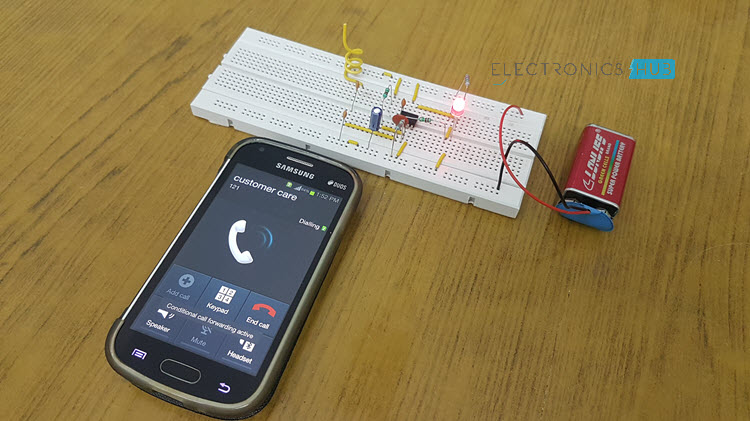
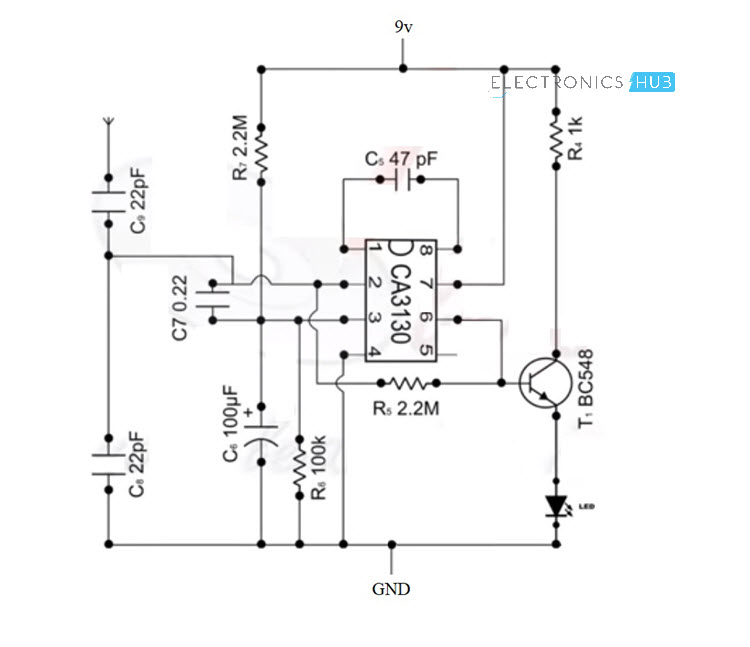
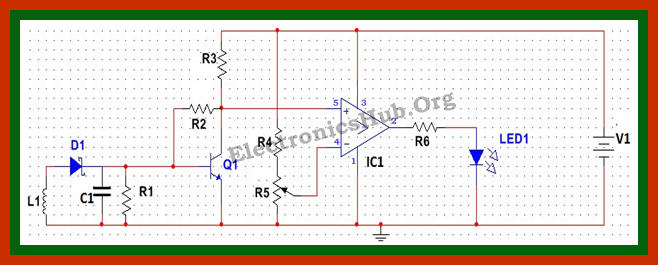
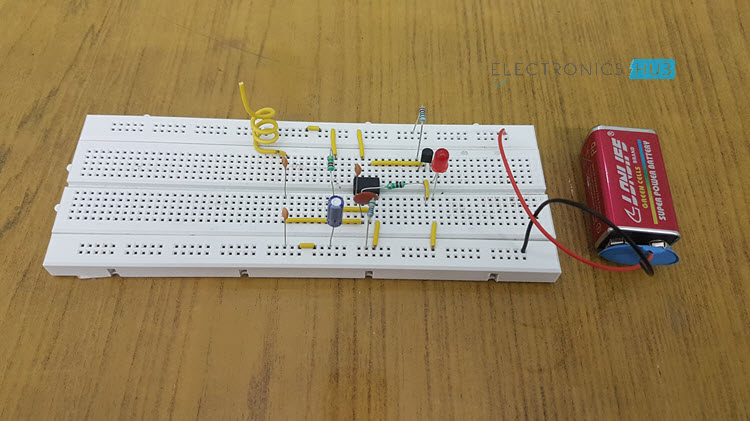
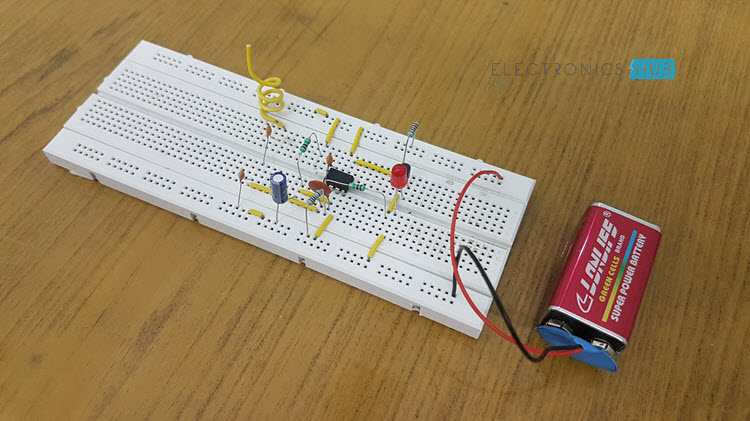


![]()